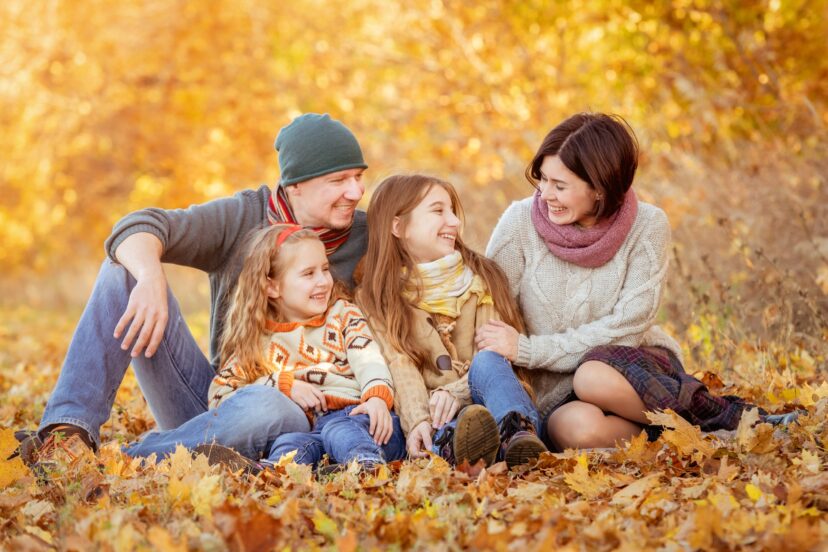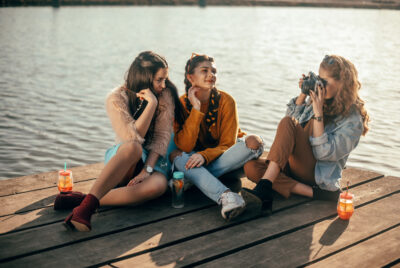Outdoor Photography: Immersing in Nature’s Beauty
As an avid outdoor enthusiast and photography enthusiast, I have had the privilege of capturing the beauty of nature through my lens. The world outside offers a treasure trove of stunning landscapes, wildlife wonders, and captivating moments waiting to be captured. In this article, I will share my insights and suggestions on outdoor photography, providing you with helpful tips to make the most of your adventures with the camera.
Introduction to Outdoor Photography
Outdoor photography is a creative pursuit that allows us to connect with nature and showcase its splendour through images. Whether you are a seasoned professional or a beginner with a passion for photography, venturing into the great outdoors offers a wealth of opportunities to capture breathtaking shots. Before you start you may want to brush up on the photography basics.
Importance of Outdoor Photography
Outdoor photography is more than just a hobby; it is a way to preserve memories, evoke emotions, and raise awareness about the beauty and fragility of our natural world. Through captivating images, we can inspire others to appreciate and protect the environment around us. Additionally, outdoor photography offers a chance to disconnect from the hustle and bustle of daily life, allowing us to immerse ourselves in the serenity of nature.
Choosing the Right Camera Gear
The Right Camera
Investing in a quality camera is essential for capturing stunning outdoor photographs. While smartphone cameras have come a long way, a dedicated digital single-lens reflex (DSLR) or mirrorless camera provides greater control and image quality. Consider factors such as sensor size, resolution, and low-light performance when selecting your camera.
Lenses for Outdoor Photography
Choosing the right lens is crucial for capturing different types of outdoor scenes. Wide-angle lenses are ideal for expansive landscapes, while telephoto lenses allow you to photograph distant wildlife or compress elements in a frame. A versatile zoom lens or a combination of prime lenses can offer flexibility in various shooting scenarios.
Mastering Composition Techniques
Composition plays a vital role in creating visually appealing photographs. By employing various techniques, you can guide the viewer’s eye and tell compelling stories through your images.
Rule of Thirds
The rule of thirds is a fundamental principle of composition. Imagine overlaying a grid with two horizontal and two vertical lines on your frame. Positioning key elements along these lines or at their intersections creates a more balanced and visually pleasing composition.
Leading Lines
Leading lines are elements within a photograph that draw the viewer’s eye toward the main subject. These can be roads, rivers, fences, or any other linear features in the scene. Utilize leading lines to add depth and guide the viewer’s gaze through the image.
Framing
Framing involves using elements within the scene to create a frame around your subject, adding depth and context. It could be a natural frame like an archway of trees or constructed objects such as windows or doorways. Framing enhances the composition and draws attention to the subject.
Symmetry and Patterns
Symmetry and patterns can create visually striking images. Look for natural or artificial elements that exhibit symmetry or repetitive patterns. Incorporating these elements into your composition can result in aesthetically pleasing photographs.
Understanding Lighting Conditions
Lighting is a crucial aspect of photography, and understanding different lighting conditions can significantly impact your outdoor shots. Here are a few lighting scenarios to consider:
Golden Hour
The golden hour refers to the period just after sunrise or before sunset when the light is soft, warm, and diffused. This time of day offers a magical quality to outdoor photographs, with gentle shadows and warm tones that can enhance landscapes and portraits.
Blue Hour
The blue hour occurs shortly before sunrise or after sunset when the sky takes on a deep blue hue. This serene lighting can create a tranquil atmosphere in your images, especially when capturing cityscapes or seascapes.
Overcast Days
Overcast days provide a diffused and soft light, ideal for photographing subjects that don’t require harsh shadows or high contrast. The even lighting helps to bring out details and colors, making it suitable for various genres of outdoor photography.
Harsh Sunlight
When shooting in harsh sunlight, it’s essential to manage the strong contrast and shadows. Consider using a diffuser or reflector to soften the light or seek out shaded areas where the lighting is more even. Alternatively, experiment with creative techniques such as silhouette photography.
Capturing the Beauty of Landscapes
Landscape photography allows us to showcase the grandeur of nature and its ever-changing moods. To capture breathtaking landscape photographs, keep the following tips in mind:
Finding the Perfect Landscape
Exploring and scouting locations is crucial for landscape photography. Research and visit places that inspire you, whether it’s a stunning mountain range, a serene coastline, or a vibrant autumn forest. Consider the time of year and weather conditions that can add unique elements to your compositions.
Creating Depth and Perspective
To create a sense of depth in your landscape photographs, include foreground elements that lead the viewer’s eye into the scene. Utilize leading lines, natural formations, or interesting objects to guide the viewer’s gaze and add a three-dimensional feel to the image.
Enhancing Colors and Contrast
Landscape photographs often benefit from vibrant colors and enhanced contrast. Consider using polarizing filters to reduce glare and deepen the blue of the sky. During post-processing, adjust the color saturation and contrast to bring out the natural beauty of the scene.
Photographing Wildlife and Nature
Capturing the beauty of wildlife and the wonders of nature is a rewarding and challenging aspect of outdoor photography. Follow these tips to improve your wildlife photography skills:
Patience and Observation
Photographing wildlife requires patience and a keen eye for observing animal behavior. Take your time to understand the habits and habitats of the animals you wish to photograph. By blending into the environment and respecting their space, you increase your chances of capturing natural and captivating moments.
Wildlife Photography Ethics
Responsible wildlife photography involves prioritizing the well-being of animals and their habitats. Maintain a safe distance, avoid disturbing the animals, and never interfere with their natural behavior. Be mindful of local regulations and guidelines to ensure minimal impact on the environment.
Macro Photography
Macro photography allows you to capture intricate details of flora, insects, and small creatures. Use a macro lens or extension tubes to get up close and reveal the hidden beauty in nature. Pay attention to lighting and composition, and utilize a shallow depth of field to isolate your subject.
Tips for Portraits in Nature
Portraits in natural settings offer a unique and authentic feel to your photographs. Here are some tips to capture stunning portraits amidst the beauty of nature:
Natural Lighting for Portraits
When photographing portraits outdoors, take advantage of natural lighting conditions. Avoid harsh midday sunlight and opt for softer lighting during the golden hour or in shaded areas. Soft, diffused light enhances skin tones and creates a more flattering and natural look.
Choosing the Right Background
The background of a portrait can significantly impact the overall composition. Look for natural elements such as trees, foliage, or interesting textures that complement your subject without distracting from them. Consider using a wide aperture to blur the background and draw attention to the person.
Candid Moments
Capturing candid moments in nature adds authenticity and emotion to your portraits. Encourage your subjects to relax, interact with the environment, and be themselves. Candid shots often convey genuine expressions and tell compelling stories.
Storytelling through Street Photography
Street photography in outdoor settings offers a window into the lives and stories of people in urban environments. Here are some tips to capture engaging street photographs:
Capturing Everyday Life
Street photography allows you to document the beauty and diversity of everyday life. Observe your surroundings, anticipate interesting moments, and be ready to capture spontaneous interactions or unique scenes that unfold in front of you.
Candid Portraits
Street portraits provide an opportunity to capture the essence and character of individuals you encounter. Seek permission when appropriate, engage in conversations, and create a connection before taking someone’s portrait. Respect people’s privacy and cultural norms while capturing authentic and compelling portraits.
Composition on the Go
Street photography often requires quick reflexes and the ability to compose scenes on the spot. Be aware of the elements within your frame, utilize leading lines, patterns, and juxtapositions to create visually intriguing images. Experiment with different angles and perspectives to add dynamism to your street photographs.
Post-Processing and Editing Outdoor Photography
Post-processing is an integral part of digital photography and allows you to enhance your images to match your creative vision. Consider the following tips for post-processing your outdoor photographs:
Selecting the Best Shots
After a day of shooting, review your images and select the best ones for further editing. Focus on images that convey the intended mood, tell a story, or possess exceptional composition. Be selective to ensure the final selection represents your best work.
Enhancing Images with Editing Software
Editing software such as Adobe Lightroom provides a wide range of tools and adjustments to refine your photographs. Adjust exposure, contrast, and color balance to enhance the image’s impact while maintaining a natural look. Experiment with different editing styles but strive to preserve the authenticity of the scene.
Preserving the Authenticity of Outdoor Photography
While editing can enhance the visual appeal of a photograph, it’s important to strike a balance and avoid over-processing. Preserve the authenticity of the outdoor scene and ensure that the final image reflects the emotions and atmosphere you experienced during the moment of capture.
Conclusion
Outdoor photography is a delightful journey that allows us to immerse ourselves in the beauty of nature, capture unique moments, and tell compelling stories. By choosing the right photo gear, mastering composition techniques, understanding lighting conditions, and exploring different genres, you can create stunning images that evoke emotions and inspire others to appreciate and protect the natural world.
Incorporate these tips and techniques into your outdoor photography adventures, and remember that the most important aspect is to enjoy the process and let your creativity flow. So, grab your camera, step outside, and let nature’s wonders unfold before your lens.
Outdoor Photography FAQs
-
Can I capture great outdoor photographs with a smartphone?
While smartphones have advanced camera capabilities, dedicated cameras such as DSLRs or mirrorless cameras offer more control and superior image quality. However, you can still capture impressive outdoor photographs with a smartphone by utilizing composition techniques, understanding lighting, and post-processing.
-
How can I improve my landscape photography skills?
Improving your landscape photography skills requires practice, exploration, and patience. Research and scout locations, pay attention to composition, utilize different focal lengths, and understand the impact of lighting on landscapes. Experimentation and learning from your experiences will help refine your skills over time.
-
Are there any specific ethical considerations for wildlife photography?
Ethical wildlife photography is essential for the well-being of animals and their habitats. Respect their space, avoid disturbing their natural behavior, and prioritize their safety. Familiarize yourself with local regulations and guidelines, and remember that the welfare of the subject always takes precedence over capturing a photograph.
-
Can I use post-processing to manipulate my outdoor photographs?
Post-processing allows you to enhance and refine your outdoor photographs, but it’s important to maintain the authenticity of the scene. Avoid excessive manipulation that alters the fundamental elements of the image. Strive to present the natural beauty and emotions experienced during the moment of capture while using editing tools to enhance the visual impact.
-
How can I capture compelling street photographs?
Capturing compelling street photographs requires observation, anticipation, and the ability to tell stories through your images. Be aware of your surroundings, seek interesting moments and interactions, and utilize composition techniques to create visually engaging photographs. Respect people’s privacy and cultural sensitivities, and strive to capture authentic moments that reflect the essence of everyday life.
Further reading
Check out our other relevant articles:
.





Comments are closed.